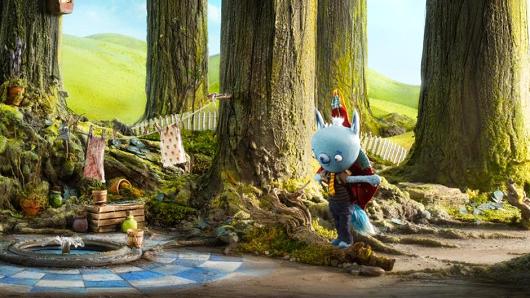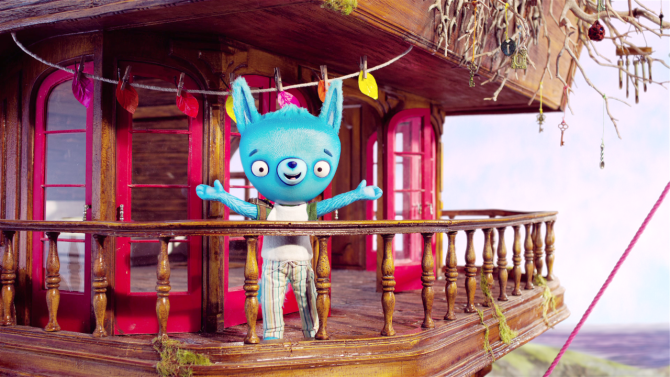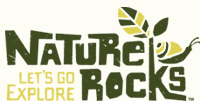 Update May 11, 2015 While Tumble Leaf continues to rake in multiple awards including five daytime Emmys, Amazon Studios Greenlights Six New Pilots for Kids. (mostly ages 6-11, one PreK) Here’s hoping their original kids’ programming stays on a winning streak for quality, as they have some heavy hitters involved in the sphere of creative talent (from Muppets and Marvel ties to Gilmore Girls!)
Update May 11, 2015 While Tumble Leaf continues to rake in multiple awards including five daytime Emmys, Amazon Studios Greenlights Six New Pilots for Kids. (mostly ages 6-11, one PreK) Here’s hoping their original kids’ programming stays on a winning streak for quality, as they have some heavy hitters involved in the sphere of creative talent (from Muppets and Marvel ties to Gilmore Girls!)
Original Post: July 23, 2014
“But if it’s alive, why does it look like a rock?”
“If it’s growing, how can it breathe underwater?”
From the barnacles on our dock to the slimy algae on our lagoon, my daughter grew up with a touch-n-poke curiosity about everything, as she toddled around trying to figure out how the world worked.
Not all kids are fortunate to have the kind of open-ended play where daily discoveries became informal learning and cause and effect shows up in the living lab of the natural world outside…But I’ve watched urban kids marvel at everything from cement pouring (watching liquids turn to solids) to grease spots dissolving on driveways using cans of Coke, to pigeons building nests under a stoop, and they’ve shared a similar sense of wonder…so applied science isn’t limited by degree of regional wilderness, but by outside opportunity for exploration.
Today, in our increasingly mediated culture where digital devices proliferate, pediatricians are literally giving “Outdoors RX” prescriptions for active play, entire movements are being launched to swap kids screen time for wild time, and research shows the benefits of nature to lessen stress and hasten healing, it’s a slam dunk given that a media producer should find a way to embed positive cues to get outside and play.
Why not snag the innovative opportunity to use storylines to give kids pointers on how things work so they stumble upon everyday science while out and about in the great outdoors?
Enter Tumble Leaf, a new kids’ original program series via Amazon backed by acclaimed programming experts like Tara Sorensen, Head of Kids Programming at Amazon Studios and the consulting chops of educational psychologist Dr. Alice Wilder.
The notion of using STEM to innovate and educate seems to be everywhere these days from toys and goods to summertime science Pinterest boards on a mission to learn…
…But Tumble Leaf feels very different than that, instead gently nudging those ‘aha’ moments informally through play.
And not just play. Play OUTdoors.
 Though at first it feels counter-intuitive to prompt offline play through online content…
Though at first it feels counter-intuitive to prompt offline play through online content…
…By using stop-motion characters as a springboard for kids to get outside romping around, media is being used to seed discovery of the natural world around them.
It doesn’t mirror hands-on experiential learning, but in some ways it does reflect it, as seen through the lens of the critters, characters and capers taking place in the show. (Fig the Fox, Maple, Hedge, and Stick, the cute little BFF that trills, etc.)
Just the thought of ‘branding’ nature as a positive influence and a purposeful, fun place to hangout and explore gives it a thumbs up at first glance, as I’m deeply annoyed by the ‘hatorade’ media often applies to outdoorsy plotlines in ‘ewww-eeek’ mode which can instill bias and set anti-nature habits early on.
Think back to the ToysRUs prankvertising that threw Mother Nature nature under the bus, and use critical thinking next time you watch media depictions of camping and the outdoors to take notes…it’s become sitcom fodder at best. I’m thankful shows like Sesame Street, Dora the Explorer, The Backyardigans, Zooboomafu/Wild Kratts and such that have offered a counter-balance to nurture the “why” questions of kids, while embedding a love of nature adventure quests, online and off. (at least that’s been the experience in EARLY learning environments…tween media and marketing is another story altogether)
The “Hmn…What happens if ____” inquiry has considerable appeal to me, regardless of whether there’s a trackable takeaway in each plot point or whether it’s simple enough STEM for preschoolers to grasp firmly.
The concept of using the natural world as an open landscape for play elicits a raw tactile joy to me, like a preschooler petting a ‘magic fern’ that retracts with a whoosh, or a toddler holding sand with fist-tight determination in chubby little hands only to see how it slips through fingers fast…
And even if the informal learning lands on kids with a similar impermanence, it feels like Tumble Leaf is trying to light the way toward discovery rather than whonk kids over the head with educational factoids, and that feels right to me.
There’s a solid need for purposeful programming that’s subtle, nuanced, and geared more toward play.
 There’s definitely a “how things work” element using a special “finding place” of everyday treasures to launch each adventure from a shipwrecked fort to tap into the outdoors as a land of surprises…but the concept itself is what intrigues me, as it takes an outdoorsy discovery narrative without pounding in ‘teaching moments’ out the wazoo. (not wild about the pink/blue fox gender stereotypes and such, but this isn’t a ‘review’ of the show, but rather a ‘hmn’ on the concept of the content!)
There’s definitely a “how things work” element using a special “finding place” of everyday treasures to launch each adventure from a shipwrecked fort to tap into the outdoors as a land of surprises…but the concept itself is what intrigues me, as it takes an outdoorsy discovery narrative without pounding in ‘teaching moments’ out the wazoo. (not wild about the pink/blue fox gender stereotypes and such, but this isn’t a ‘review’ of the show, but rather a ‘hmn’ on the concept of the content!)
From animals and nature, caves and crystals, to silly laughing clams and imaginative treehouse fort creations, I frankly don’t even care how much kids ‘retain’ in terms of usable ‘science’ if they just ‘get it’ that the outdoors is a treasure trove of possibility that needs explored! Example?
“With a splish and a splash, grant my wish in a flash!” They segue from the shapes of the coins tossed into the fountain to the bounce of the sunbeam off the shiny object which later became the ‘guiding light’ as darkness fell and Fig and Maple became disoriented, relying on the use of the moon and light refraction of the coins to fumble and stumble their way back to the fort…
Forget realism, what toddler hasn’t watched a sparkly light beam bounce across a floor with fascination, or been fixated on a shiny object catching light? Will they retain light refraction? Absorb how the world works? Who cares? To a very young toddler, it might just bring comfort knowing some other wee one is experiencing this phenomenon, and now there’s an explanation for it…that in itself is an ‘aha’ moment.
Another episode involves a flashlight and a “scared of the dark” social emotional learning moment that not only helps kids confront fears with the buddy system and peer play with shadows, it ultimately sets forth the “closer we are to the light, the bigger the shadow” mindfulness that comes in handy for things that go bump in the night.
(Personally, that would’ve come in handy in my military brat childhood where I moved often and needed to make peace with wall projections in new surroundings each move…From massive branches to urban telephone wires these things all seemed to come alive at night bobbing and swaying with massive tentacle-like reach at window-eye level)
Dr. Alice Wilder commented a bit on the show’s vision and mission citing the connection with one of my own play heroes, Dr. Stuart Brown who often talks about fostering children’s interests and passions:
“What did you like to play as a kid? How has that made you who you are today? Think about it…”
As I flashed back to my own maverick ways of building glass animal cities out of moving boxes and playing outside in new environs throughout the globe, and then fast-forwarded to my own (now collegiate) daughter whose main desire for a major is to find a field where she won’t be a “cubicle critter” tethered to a desk job, I realized they’re right…this stuff matters…It sticks early on. The way we play and the worldviews we have are not very altered states from yesteryear.
Alice Wilder made an over-arching statement that tapped into a HUGE educational issue for me that had me head-bobbing in “YES!” mode…
“Play needs to be encouraged more in a young child’s life and validated as the way preschoolers learn. But, ‘play’ is being usurped for numbers and letter learning both in school and at home”…
“Kids are natural born scientists – they are curious, experimental, not afraid to fail, take risks…Tumble Leaf wants to validate and inspire this way of thinking as a way of life!” –Dr. Alice Wilder
THIS is where I think media like Tumble Leaf and any media like it could serve us well to reframe, renew, and reposition the depleted natural inclinations of children’s love of learning that have been pummeled out of them by our formal educational system. I’ve witnessed time and again how schools have sucked the lifeblood out of kids’ scientific inquiry and creative critical thinking to yield rote responsiveness to ‘equation’ based thinking. Bah. Don’t get me started on the California school system.
My own child’s tactile, hands-on love of marine biology and environmental engineering which began by playing in the muck in our lagoon, and was nourished with shark and sea camps like Redwood Shores’ MSI-Marine Science Institute and Coyote Point ‘CuriOdyssey’ environmental education ended up sinking into a cesspool of institutional schooling that turned a love of solution-style learning into problem-style worksheets and tests.
Instead of fanning the flames to ignite her science spark, school dampened and smoldered that attraction until pffzzzt…poof. Gone.
If we want to ‘bridge the gender gap’ with girls in STEM and encourage youth with a love of green tech/marine bio hoping to KEEP girls on those career trajectories, then we’d better start adapting our approaches to “solutionary” creative styles that resonate with kids instead of linear, pigeon-holing pathways that knock the stuffing out of their excitement and learning process…Discovery, people. Focus on the play and discovery!
Is the goal of Tumble Leaf to purposely seed science and the outdoors early on in preschool years?
Educational pyschologist Dr. Alice Wilder summed:
“Play is how young children learn…And in the case of Tumble Leaf, which takes place out in nature and the natural world, kids learn science through their play –when a kid jumps in a puddle – there is science there! Young children’s creative play leads to scientific discoveries and scientific thinking…It inspires curiosity….
In research, one 4.25 year old boy who learned from this episode that the shadow is bigger when you are closer to the light asked: ‘I am wondering how you get big shadows in the afternoon if the sun is still up high.’ (because the sun is at its farthest point away.) If our shows can do this – we are having the impact we would like to have.”
As for parents’ feedback on Tumble Leaf…
I put out an open call on Twitter for any parents offering firsthand feedback on the show (since I no longer have a toddler, but a 19 y.o. teen) and this email from Isaac Cates @Cartozia resonated:
“My three-year-old son really loves Tumble Leaf. I feel like it caught him at just the right moment, when he is starting to learn to play and explore and ask questions independently. I’ve already been able to use it to make some analogies to help him understand phenomena in the world. Last week, while I was texting in the car (we were parked), the sun reflected from the phone’s face onto the shadowed roof of the car, making a bright spidery shape that my son asked about. I showed him how the light was bouncing, made shadows with my fingers, and reminded him about the “Coins” and “Flashlight” episodes. Then he wanted to hold my phone and make lights of his own…It’s got some really cute character designs and nice animation…My son also likes to lift his right arm and pretend to talk to Stick.”
Also, here’s a recent review from the show’s site that pounced on the notion of the power of play quite well…
And another that addressed closing the loop on some of the more complex concepts swirling about at the PreK level, by suggesting they toss in a “Figure It Out” clip at the end of each episode:
And finally, here’s my e-chat with Tumble Leaf Executive Producer Kelli Bixler:
Amy Jussel, Shaping Youth: How have you purposely created Tumble Leaf to seed nature intrigue and nourish a love of curiosity and science? What’s the show’s origin or intentional plan?
Kelli Bixler, Tumble Leaf: Well, I grew up on 60 acres of woods and fields, so in the summer we’d wake up in the morning and venture outside and wouldn’t come home till dinner time, we had freedom to explore so learning about the world came naturally, it was a wonderful way to grow up! Drew Hodges, the creator of Tumble Leaf, grew up in a suburb where he did the same kind of thing each summer. So this ‘summer vacation’ theme of freedom- not having your days planned or structured- was, I believe subconsciously, the starting point in developing Tumble Leaf.
Amy Jussel, Shaping Youth: How will you carry forth the exploration/discovery theme to make outdoor play in the natural world a fun, safe, unplugged adventure vs a ‘scary place’ particularly for urban kids not used to the outdoors? Was your plotline of the cave and darkness pathways to light purposely striving to get kids comfortable with nature and the outdoors in an era of nature deficit disorder?
Kelli Bixler, Tumble Leaf: First off we come from the point of view that the great outdoors is NOT scary, it’s beautiful and meant for exploring, enjoying, and meeting new creatures. I don’t think any of us here think that the outdoors is “scary.” For the most we tell stories that we think are interesting, good stories…do they get us excited and fit the world of Tumble Leaf? If so, then we add the play and science.
Amy Jussel, Shaping Youth: “Technology Brings Us Closer Than Ever to Wildlife” Agree or Disagree? Do you feel close-up live cams and sites like Explore.org and Discover the Forest.org and nature apps help or hinder real world experiential discovery?
Kelli Bixler, Tumble Leaf: I’d agree that technology DOES bring us closer than ever to wildlife. If not for filmmaking and it’s distribution (which involves all sorts of technology) I’d never know anything about crocodiles, giraffes, mountain lions, because I don’t live where those animals do, yet because of my personal experience of growing up knowing animals that do live in my neck of the woods, I can bridge that connection to animals I don’t know, which makes for an expanded more meaningful viewer experience. I think both experiences are needed and beneficial and best when used in tandem.
Amy Jussel, Shaping Youth: I see that our local Bay Area Children’s Discovery Museum screened the series this summer and integrated tactile, eco-literacy activities and STEM concepts for springboards into nature…Is this part of the larger marketing plan for the show, teaming with children’s museums to encourage outdoor play? What other ways will you be partnering and aligning with organizations or museums?
Kelli Bixler, Tumble Leaf: Amazon executives are the only ones who can answer this, since they are in change of the marketing of Tumble Leaf, but I hope so. As for other marketing, I will say that creatively we never think of apps, games or toys when creating an episode of Tumble Leaf. A good story is our only concern…
Amy Jussel, Shaping Youth: How can we make nature more ‘relevant’ to youth and educators so they bring appreciation into the classroom and into their home lives, ESPECIALLY in urban environs?
Kelli Bixler, Tumble Leaf: Nature is everywhere –From cockroaches, birds, to a stray cat- if you watch nature long enough it will amaze and delight you- ANYWHERE you can be outside.
Amy Jussel, Shaping Youth:Thanks, for your time and good luck with the series…I’m for anything that will get kids outdoors experiencing nature actively, positively, and respectfully, as they’re the stewards of our planet.
Related Eco-Kids Reading By Amy Jussel, on Shaping Youth
Hunger Games: Archery-Using Media to Get Kids Outside
Will Kids Reconnect With Nature…At School?
The Nature Principle: Experience The Earth Beyond Instagram
Media Netiquette & Some Great Nature Apps in a Totally Wired World
Amazon Kids Shows Segue Screen Time Into View + Do (part one)
Creative Galaxy: Inspiring Kids With Art in Everyday Life (part two)
For more see EcoKids/Environment Category on sidebar/search
A few FREE nature apps via Wilderness.org and NWF.org
Trailhead by The North Face Oh, Ranger! Parkfinder NatureFind












Speak Your Mind